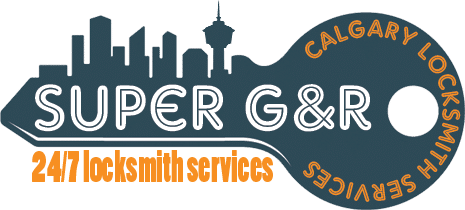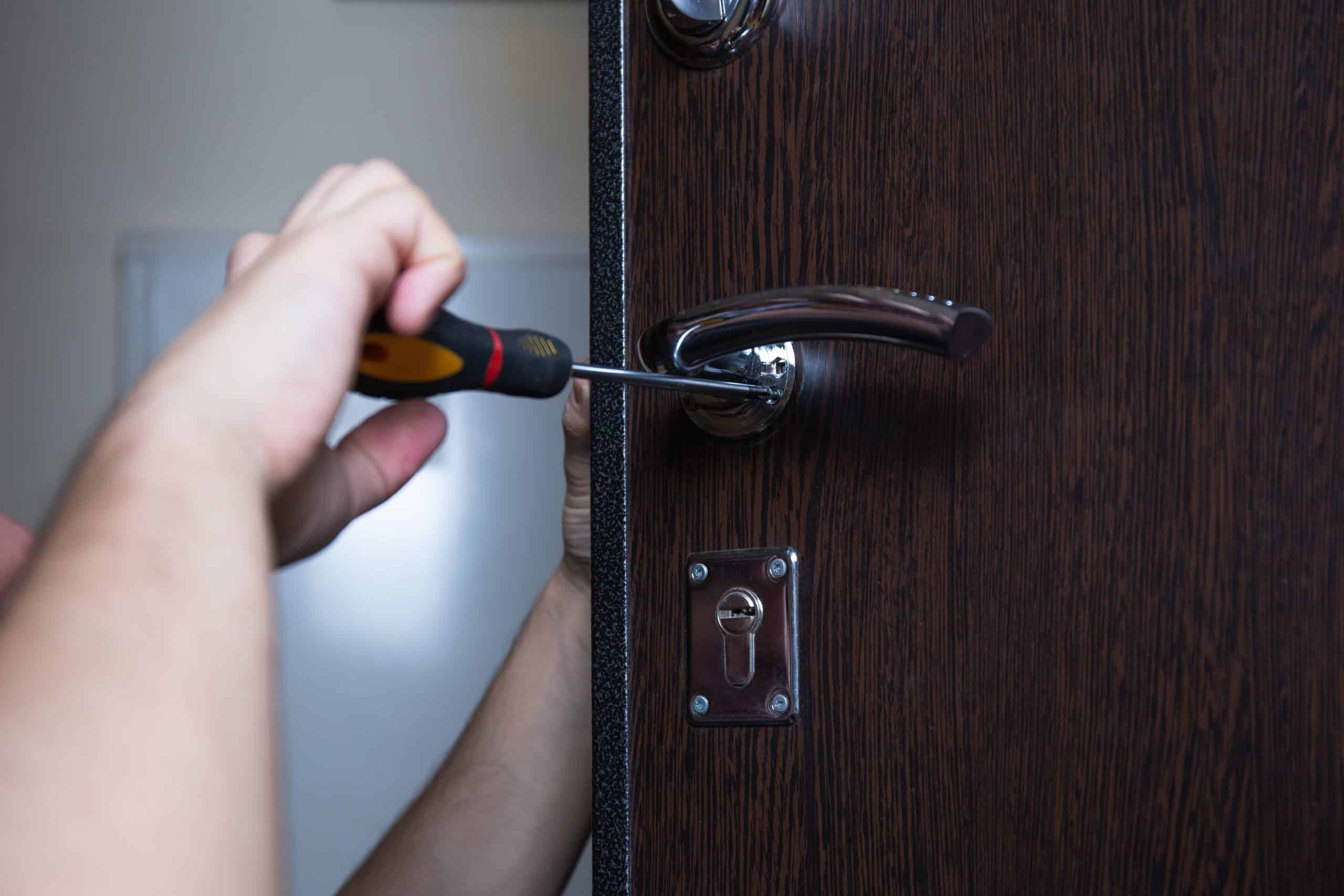Locks are meant to protect, not frustrate. Yet few things feel more helpless than turning a key and feeling it spin loosely without unlocking the door. When a lock spins freely, it usually means something inside the mechanism has disconnected or worn out. We’ve all been there—standing in the cold, turning the key again and again, hoping it suddenly catches. The good news is that most causes are simple to understand and can be prevented or fixed with the right approach.
Understanding Why a Lock Spins Freely
A freely spinning lock is often a sign that the connection between the key cylinder and the latch mechanism has failed. Every lock works by turning a small cam or tailpiece inside that retracts the latch. When that link breaks or loosens, the key still turns, but nothing happens behind it.
Sometimes the cause is mechanical wear from years of use. Other times it’s a loose set screw or a broken cam. In older locks, parts inside the cylinder can crack or slip out of alignment. Environmental factors like freezing temperatures or humidity can also speed up internal corrosion. Knowing the likely reason helps us decide whether the problem needs quick tightening or full replacement.
Checking for External Issues First
Before assuming the worst, it helps to look at the simple possibilities first. Start by confirming you are using the right key and that it isn’t bent or worn down. Even a small twist in the metal can prevent proper alignment inside the cylinder.
Next, gently test whether the lock feels loose against the door. If the entire lockset wobbles when you turn the key, the screws holding it in place might have loosened over time. Tightening these screws from the inside of the door can sometimes restore full function.
If you can see the latch moving slightly but not enough to open, the cam connection inside may still be partially intact. Avoid forcing the key harder, as that can break internal parts completely.
When the Interior Mechanism Fails
If tightening doesn’t help, the issue is likely deeper inside the mechanism. In most locks, a small piece called a tailpiece or actuator connects the cylinder to the latch. When this part breaks or detaches, the key spins without engaging the latch bolt.
Replacing or repairing this part requires disassembling the lock. For homeowners comfortable with basic tools, removing the handle and inspecting the cylinder can reveal whether the tailpiece has snapped or come loose. However, if the lock is old or high-security, it’s easy to damage the cylinder further by opening it incorrectly. That’s where professional help becomes essential.
A certified locksmith in Calgary can remove the cylinder safely and replace the broken connection without harming the door or frame. They can also rekey the lock or upgrade the mechanism if wear and tear have made it unreliable.
Signs the Lock Cylinder Needs Replacement
A spinning key is often a warning that the cylinder has reached the end of its life. You might notice the key becoming harder to insert, sticking inside, or feeling loose even after reassembly. Internal springs may have weakened, or pins could be worn unevenly.
At this stage, replacing the cylinder is the safest choice. Continuing to use a damaged lock increases the risk of being locked out again—possibly when you least expect it. A new cylinder offers smoother operation, better alignment with modern keys, and improved resistance to tampering.
It’s also a good opportunity to ensure your locks are all keyed alike or fitted with newer security technology. Many homeowners upgrade to cylinders that resist bumping or drilling once replacement becomes necessary.
Preventing the Problem in the Future
A little maintenance goes a long way in preventing a spinning lock. Lubricating the cylinder every few months with a graphite-based product helps keep internal pins moving freely. Avoid using oil, which attracts dust and can gum up the mechanism over time.
Keep an eye on how your keys and locks feel. A sudden change in tension, a sticky key, or a handle that starts to rattle are all early signs that parts are loosening. Addressing small issues early can save you from complete failure later.
Weather also plays a role. In Calgary’s cold winters, moisture inside the lock can freeze and cause internal parts to expand or contract. Try to keep locks dry and protected, especially on exterior doors.
When You’re Locked Out and the Lock Spins
If the lock spins freely and the door will not open, forcing it rarely helps. Instead, start by checking if there’s another entry point to reach the interior side of the lock. Once inside, removing the handle or knob may allow access to the latch assembly.
If you cannot enter from another door, a professional locksmith can use specialized tools to open the door without damage. They will then diagnose whether the tailpiece, cam, or cylinder needs replacement. Trying to drill the lock yourself might seem tempting, but modern locks often have hardened components that can make this more difficult and costly to fix later.
Professional service also ensures the door frame and strike plate remain aligned after the repair. Poor alignment can make even a new lock fail prematurely.
Considering the Type of Lock
Different lock types fail in different ways. A deadbolt with a separate cylinder might loosen from its mounting screws, while a knob lock often suffers from a detached tailpiece. In mortise locks, internal levers or springs can snap.
Understanding the lock’s type helps us diagnose the issue faster. For example, when a key spins freely in a deadbolt but the thumb turn inside still works, the problem is limited to the exterior cylinder connection. If both sides spin, the bolt mechanism itself is broken.
In electronic locks, a freely rotating handle may signal that the clutch or drive motor has failed. These locks often include a mechanical override key, but if that also spins, the cylinder has likely disengaged from the electronic assembly.
Repair vs Replacement
It’s natural to wonder whether a spinning lock can be repaired instead of replaced. The answer depends on the extent of internal damage and the lock’s quality. If only the tailpiece is broken, repair is often possible. But if the cylinder or cam housing is cracked or worn, replacement is more reliable and usually not much more expensive.
Repairs make sense when the lock is part of a matched set or uses a unique key system, such as master keying. Otherwise, replacement ensures better security and longer life. Most modern locks are designed for easy reinstallation using existing door holes, so the process is quick once the old one is removed.
Extra Tip: Check the Door Alignment
Sometimes what seems like a spinning lock problem is actually a door alignment issue. If the latch and strike plate do not line up, turning the key might feel loose or ineffective because the latch cannot retract fully. Seasonal changes, humidity, or settling foundations can all shift a door slightly out of place.
To test this, open and close the door slowly and observe whether the latch slides smoothly into the strike plate. If you feel resistance or see the latch hitting the edge of the plate, adjusting the hinges or moving the strike plate may solve the issue.
Professional Help and Peace of Mind
A freely spinning lock often feels worse than it is. But if tightening, lubricating, or checking alignment does not help, the best next step is to call a professional. A qualified locksmith can assess the mechanism quickly, identify the damaged part, and restore security without unnecessary replacement.
For anyone unsure where to start, the safest option is to reach out for expert support. You can contact us for professional inspection, repair, or replacement. Our goal is to make sure your door works smoothly and your home stays secure.
FAQ
Why does my key turn but the door won’t open?
This usually happens when the internal tailpiece or cam inside the lock has broken or disconnected. The key still turns, but the motion no longer moves the latch bolt to open the door.
Can I fix a spinning lock myself?
You can try tightening loose screws or lubricating the cylinder, but if the problem is inside the mechanism, it’s safer to have it repaired by a professional to avoid damaging the cylinder or the door.
Should I replace the lock if it spins freely?
If internal parts are worn or broken, replacement is often the best solution. It ensures proper alignment and restores full function, especially for older or corroded locks.
Can cold weather cause my lock to spin?
Freezing temperatures can cause metal to contract and affect how parts connect inside the lock. Moisture that freezes can also make the cylinder seize or loosen over time. Regular maintenance helps prevent this.
How can I prevent my lock from failing again?
Lubricate it regularly with graphite, tighten screws periodically, and avoid forcing a stiff key. Watch for early signs like sticking or looseness, and fix them before the problem worsens.

